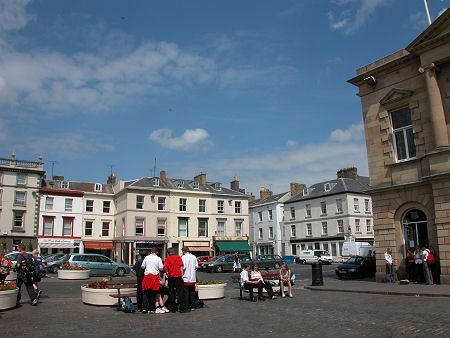 Kelso, William Fairbairn's Birthplace |
Sir William Fairbairn, 1st Baronet of Ardwick, lived from 19 February 1789 to 18 August 1874. He was an eminent structural engineer who pioneered new designs for iron bridges and ships. The wider picture in Scotland at the time is set out in our Historical Timeline.
William Fairbairn was born in Kelso, the son of a farmer. After finishing his schooling, he became an apprentice to a millwright in Newcastle, where he befriended the young George Stephenson. In 1813 he moved to Manchester and four years later, at the age of 28, he went into partnership with James Lillie to establish the mill-machinery business Fairburn and Lillie Engine Makers.
In the 1820s Fairbairn's interest in iron structures led to his design of a bridge for the Liverpool and Manchester Railway. He subsequently diversified from mill machinery into the manufacture of boilers for locomotives, and then into shipbuilding, building the iron paddle-boat Lord Dundas at Manchester in 1830. In 1834 Fairbairn established a dedicated shipyard at Millwall on the Thames, where over the following 15 years he oversaw the building of 80 iron ships and developed new forms of design and construction. In 1839 he began building railway locomotives at Millwall, completing 400 by 1862 even though the works had no railway access. In the 1840s Fairbairn acted as consultant to the young Robert Stephenson on the building of railway bridges at Conway and over the Menai Straits, and used his shipbuilding experience to develop a new type of box girder tubular bridge.
This was an era in which not all engineering ventures were successful, and the failures of bridges and other structures, and boiler explosions, were far from unknown. Fairburn was a pioneer in the study of metal fatigue. From 1861, at the request of the UK Parliament, he began large scale testing of iron structures.
Sir William Fairbairn was elected as a Fellow of the Royal Society in 1850 and was made 1st Baronet of Ardwick in Lancashire in 1869. He died in 1874 and is remembered by a statue erected in Manchester Town Hall.
